Smart Tactics to Optimize CX KPIs for Success
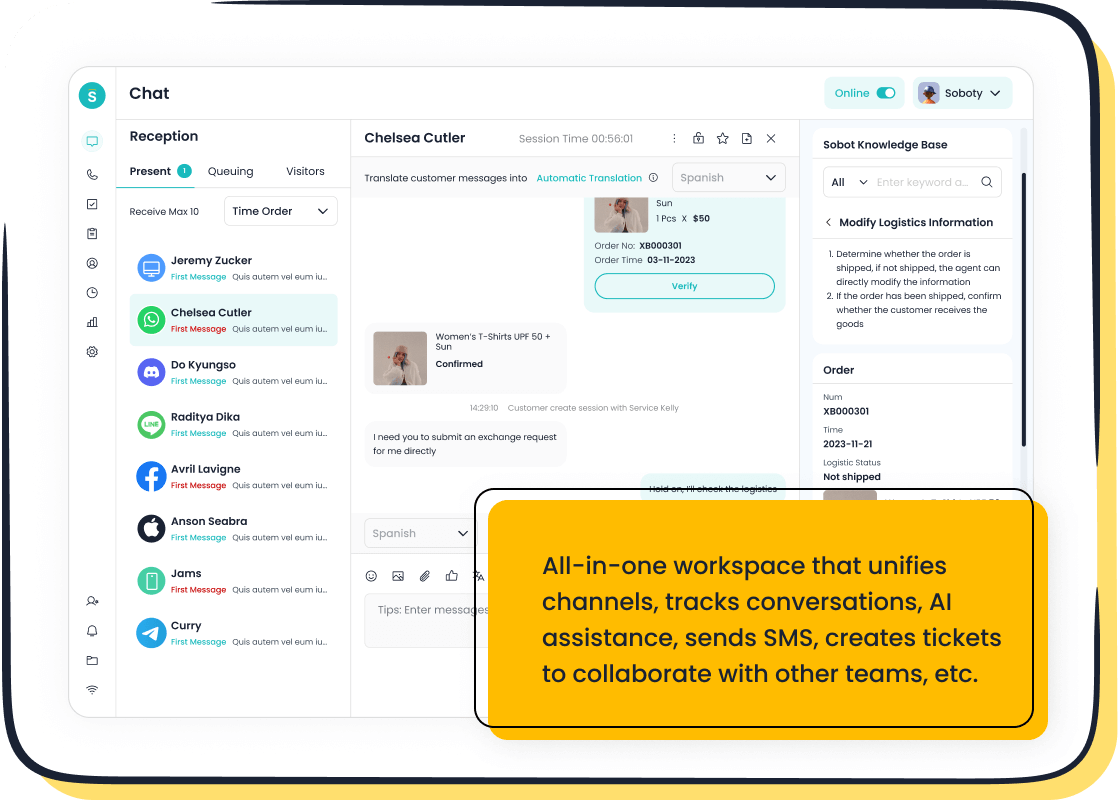
Customer experience shapes business success and drives customer loyalty. Companies see measurable gains when they focus on customer experience. Over 50% of customers leave after just one poor experience, while 86% pay more for better service. Sobot AI helps businesses unify customer data and automate responses, leading to higher satisfaction and loyalty. Real-time analytics and actionable tactics, like cross-team collaboration and feedback loops, enable continuous improvement. Optimizing CX KPIs with tools such as Sobot ensures every customer interaction adds value and builds lasting experience.
CX KPIs Overview
What Are CX KPIs
CX KPIs, or customer experience key performance indicators, are measurable values that show how well a business delivers positive experiences to its customers. These metrics help companies track, analyze, and improve every step of the customer journey. Businesses use CX KPIs to understand what customers think and feel about their products, services, and support. Sobot focuses on customer-centric metrics to help organizations measure and enhance every interaction. By tracking the right customer experience KPIs, companies can make better decisions and create lasting value.
Why Customer Experience Matters
Customer experience shapes how people view a brand. A single poor experience can cause over half of customers to leave, while great service builds loyalty and trust. Companies that measure and improve customer experience see higher satisfaction, more repeat business, and stronger growth. Customer experience metrics like NPS and CSAT show how well a business meets customer needs. Sobot’s solutions help businesses collect and analyze these metrics, making it easier to spot problems and act quickly. Focusing on customer experience KPIs leads to better service and long-term success.
Key Metrics to Track
Tracking the right customer experience metrics is key to business growth. The most common CX KPIs include:
| KPI Name | Description | Importance for Business Outcomes |
|---|---|---|
| Net Promoter Score (NPS) | Measures customer loyalty and advocacy by asking likelihood to recommend a brand or service. | Predicts future revenue and word-of-mouth marketing; helps set leadership targets. |
| Customer Satisfaction Score (CSAT) | Measures satisfaction with specific interactions or transactions. | Evaluates service efficiency and immediate satisfaction; useful after key touchpoints. |
| Customer Effort Score (CES) | Assesses ease of customer interactions. | Linked to repurchase likelihood and loyalty; reducing effort decreases churn. |
| Churn Rate | Percentage of customers lost over a period. | Shows customer loss; critical for retention strategies. |
| Retention Rate | Percentage of customers kept over time. | Indicates loyalty and business stability; impacts revenue growth. |
| Customer Lifetime Value (CLV) | Estimates total revenue from a customer over their relationship. | Connects experience improvements to long-term financial outcomes; helps prioritize investments. |
Tip: Sobot’s analytics tools help businesses track over 150 customer experience metrics, making it easy to spot trends and improve service.
Customer Experience KPIs by Journey
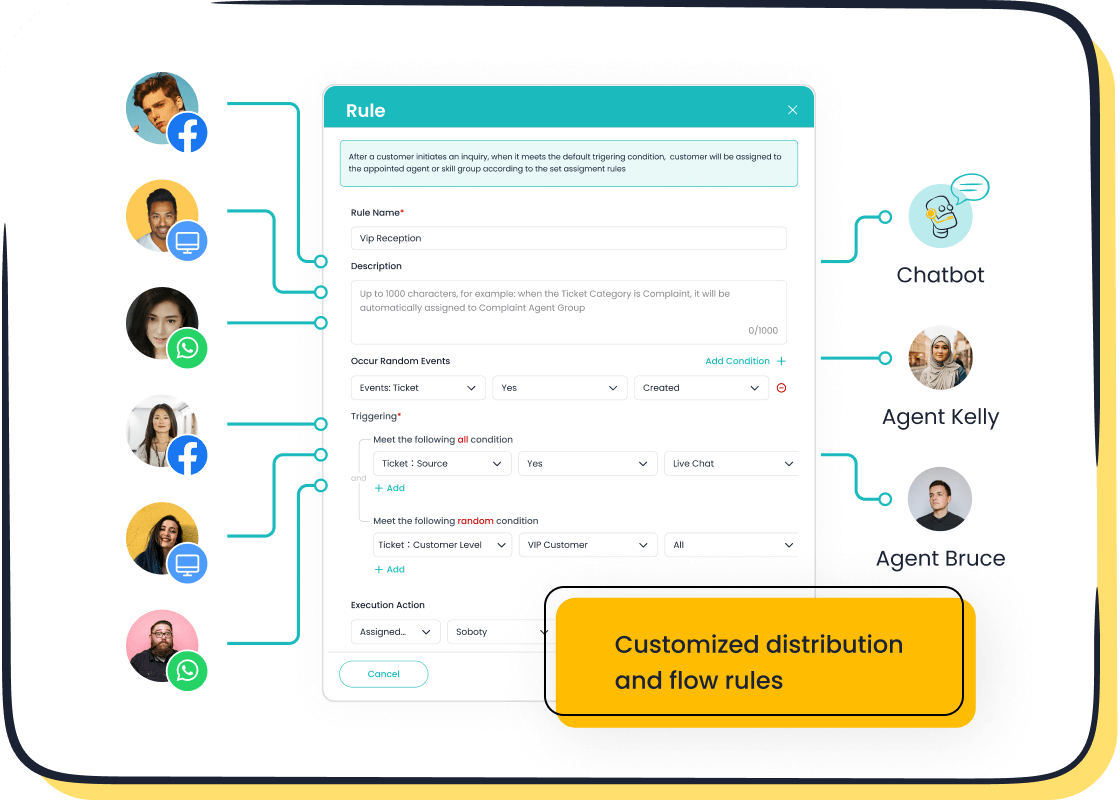
Understanding customer experience KPIs across the customer journey helps businesses improve every interaction. Each stage—acquisition, engagement, and retention—uses different metrics to measure success. Sobot Live Chat’s analytics and omnichannel support make it easy to track these KPIs in real time, giving teams a clear view of performance and areas for improvement.
Acquisition Metrics
Acquisition focuses on attracting new customers and making a strong first impression. Companies use several customer experience KPIs to measure acquisition success:
- Customer Acquisition Cost (CAC)
- Customer Lifetime Value (CLV)
- Cost Per Lead (CPL)
- Conversion Rates
- Net Promoter Score (NPS)
- Customer Satisfaction (CSAT)
These metrics show how efficiently a business gains new customers and the quality of their first experience. Sobot Live Chat supports customer acquisition by connecting with users across websites, apps, and social media, ensuring no missed opportunities. The platform’s analytics track conversion rates and customer satisfaction, helping teams optimize campaigns and reduce acquisition costs.
Tip: Tracking operational metrics like First Contact Resolution (FCR) and Average Resolution Time (ART) during acquisition can reveal how quickly new customers get help.
Engagement Metrics
Engagement metrics measure how customers interact with a brand after the initial contact. These customer experience KPIs include:
| Engagement Metric | Business Outcome |
|---|---|
| Click-Through Rate (CTR) | Shows interest in content or offers |
| Engagement Rate | Measures overall interaction with the brand |
| CSAT | Reflects satisfaction with specific interactions |
| CES | Indicates ease of using services |
High engagement leads to better customer experience and increased loyalty. Sobot Live Chat’s omnichannel workspace allows agents to respond quickly, improving engagement rates and satisfaction. A recent review praised Sobot’s centralized hub for reducing response times and boosting team efficiency.
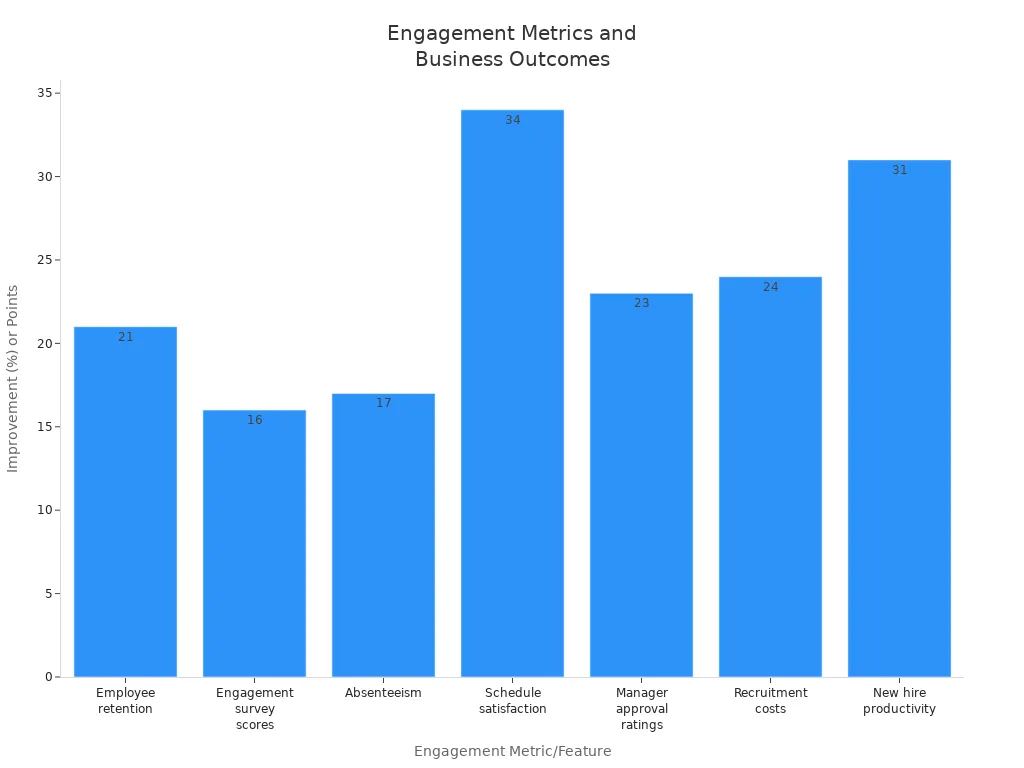
Engaged employees and fast responses drive customer satisfaction, which leads to higher retention and revenue growth.
Retention Metrics
Retention metrics focus on keeping customers and building long-term relationships. Leading organizations track these customer experience KPIs:
- Customer Retention Rate (CRR)
- Repeat Purchase Rate (RPR)
- Customer Churn Rate
- Customer Lifetime Value (CLV)
- NPS
- CSAT
Regular tracking of these metrics helps businesses spot issues and improve customer retention. Sobot Live Chat’s analytics provide real-time data on repeat purchases and satisfaction, making it easier to develop targeted retention strategies. For example, a high CRR signals strong loyalty, while a rising churn rate shows the need for action.
Note: Segmenting customers by purchase frequency or loyalty status helps teams personalize retention efforts and boost satisfaction.
Optimizing Customer Experience KPIs
Customer Segmentation
Customer segmentation helps businesses deliver the right experience to the right audience. By dividing customers into groups based on behavior, location, or purchase history, companies can personalize service and support. For example, transactional segmentation allows teams to recommend products based on past purchases, while lifecycle segmentation tailors messages to each stage of the customer journey. Companies like Airbnb and HubSpot use data-driven personas to improve customer satisfaction and loyalty. Sobot Live Chat enables segmentation by tracking interactions across channels and storing customer data in a unified workspace. This approach uncovers hidden patterns and helps teams target improvement efforts where they matter most.
| Best Practice | What to Do | Why It Matters | How to Start |
|---|---|---|---|
| Segment feedback | Break down responses by customer type, location, product line, or behavior | Different customers have different needs; segmentation uncovers hidden patterns | Create reports comparing satisfaction by demographics, tenure, or recent support history |
| Balance quantitative & qualitative data | Analyze scores and open-text comments to identify themes, emotions, and pain points | Scores show what is happening; comments explain why | Use text analytics tools to categorize comments by sentiment and topic |
| Standardize feedback collection | Use consistent formats, timing, and phrasing across channels and touchpoints | Ensures data reliability, comparability, and reduces collection bias | Create reusable survey templates and schedule automatic sends after key interactions |
| Integrate data from multiple channels | Centralize feedback from email, social, chat, in-app, and other sources | Fragmented feedback leads to incomplete insights; integration provides a 360° customer view | Use CX software to sync all feedback sources into one dashboard |
| Close the feedback loop | Acknowledge, act on, and respond to customer feedback | Builds trust and loyalty; shows feedback drives change | Set up automated thank-you emails and assign follow-up tasks for low scores or negative comments |
Note: Targeted segmentation leads to more relevant experiences, higher engagement, and measurable improvement in customer satisfaction.
Feedback Collection
Collecting feedback from customers is essential for understanding their needs and improving service quality. Companies achieve the best results by using multiple channels, such as websites, email, social media, and in-app surveys. Short, targeted surveys increase completion rates by 30%. AI-driven analytics help teams quickly identify trends and pain points in feedback, making it easier to act on insights. Sobot Live Chat supports feedback collection with built-in satisfaction surveys and customizable dashboards. Closing the feedback loop—by acknowledging and responding to customer feedback—builds trust and reduces churn by up to 20%. Empowering employees to address feedback directly also boosts customer satisfaction and engagement.
| Method/Practice | Supporting Details & Impact | Example/Case Study |
|---|---|---|
| Short, targeted surveys | Surveys with fewer than 10 questions increase completion rates by 30%. | Airbnb |
| Follow-up with customers | Acknowledging feedback and communicating changes improves engagement and trust. | American Express |
| Incentivizing participation | Incentives help overcome low response rates, improving feedback quantity and quality. | Toyota |
| Multichannel feedback collection | Collecting feedback via websites, email, social media, in-app, and surveys captures comprehensive views. | N/A |
| AI-driven analytics | AI tools improve understanding of customer needs by 30% and operational efficiency by 25%. | |
| Closing the feedback loop | Closing the loop increases customer loyalty by 25% and reduces churn by 20%. | American Express |
Tip: Sobot’s omnichannel platform ensures no feedback is missed, helping teams make data-driven decisions for continuous improvement.
Technology and Automation
Technology and automation play a vital role in optimizing customer experience KPIs. AI-powered chatbots and automated workflows handle routine inquiries, freeing agents to focus on complex issues. For example, an e-commerce company used AI chatbots to provide instant, 24/7 support, leading to faster resolutions and higher customer satisfaction. Sobot Live Chat integrates with CRM systems and uses AI to deliver personalized support across channels. Automation centralizes real-time data, reduces manual errors, and speeds up decision-making. This approach improves KPIs such as first contact resolution, agent productivity, and overall service quality. Businesses that balance automation with human support see the best results, as 75% of customers still prefer speaking to a person for complex problems.
- Generative AI summarizes and analyzes customer interactions, enabling faster, more accurate responses.
- Automation scales operations, maintains quality, and reduces costs.
- AI tools provide real-time feedback and context to agents, supporting better service delivery.
Companies with strong omnichannel engagement retain 89% of customers, compared to just 33% for those with weak strategies (source).
Data Analysis
Data analysis transforms raw information into actionable insights for customer experience improvement. By combining structured data, like CSAT and NPS scores, with unstructured data from social media and support chats, businesses gain a complete view of customer sentiment. Sobot’s analytics tools track over 150 indicators, helping teams spot trends and identify opportunities for improvement. Regularly monitoring KPIs such as retention rate, churn rate, and customer effort score allows companies to refine their strategies. Interactive dashboards and real-time visualizations empower frontline teams to make quick, informed decisions. Canadian Tire, for example, used advanced analytics to identify cross-sell opportunities, resulting in a 20% sales increase during challenging times.
- Establish feedback loops by surveying customers and analyzing support interactions.
- Set clear goals and benchmarks for KPIs.
- Use self-service analytics tools to explore data and uncover trends.
Data-driven decisions lead to better customer satisfaction, higher retention, and stronger business growth.
Empowering Teams
Empowering customer-facing teams with training and resources directly impacts customer experience KPIs. Well-trained employees resolve issues faster, leading to higher customer satisfaction and lower churn rates. Sobot provides agents with AI-assisted tools and a unified workspace, making it easier to access customer data and deliver quality service. Regular training on product knowledge and communication skills boosts agent confidence and efficiency. Recognizing and rewarding team achievements increases motivation and job satisfaction. Companies that invest in team empowerment see improvements in first call resolution, average handling time, and overall service quality.
- Training improves communication, problem-solving, and escalation skills.
- Empowered teams deliver personalized, omnichannel service.
- Recognition and autonomy boost employee engagement and retention.
90% of Americans consider customer service when choosing a company, and 96% say it influences brand loyalty (source).
Customer Satisfaction in Practice
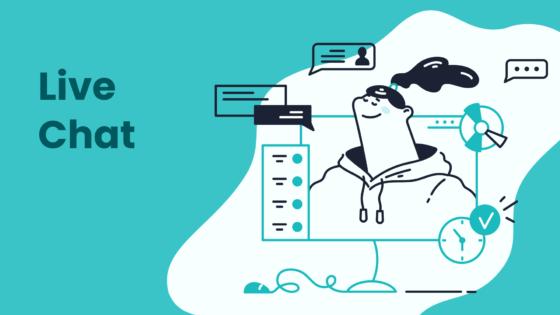
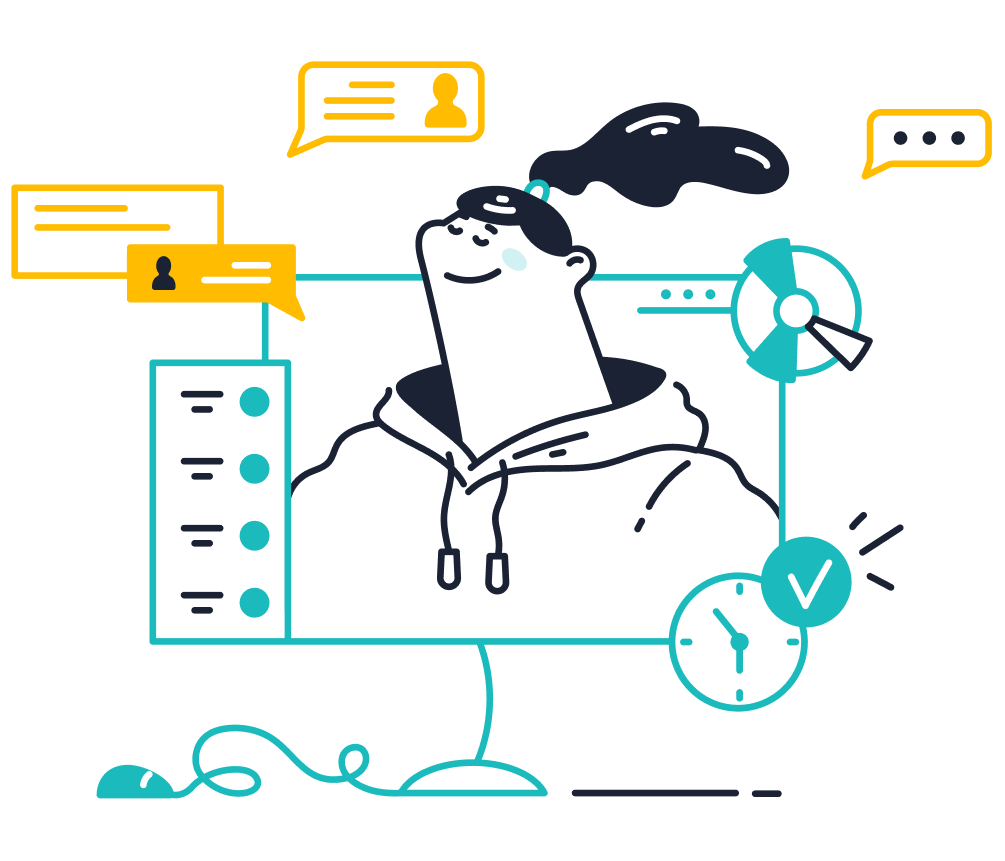
Sobot Live Chat Solutions
Sobot Live Chat transforms how organizations deliver customer support and service. The platform uses AI-powered chatbots to provide 24/7 support, automate routine tasks, and detect subtle emotional cues in customer interactions. This approach improves customer satisfaction by reducing wait times and ensuring every customer receives timely, accurate responses. Companies across industries report that Sobot’s omnichannel AI integrates websites, apps, social media, and messaging platforms, creating a seamless experience. Teams benefit from a unified view of customer feedback, which helps them identify root causes of dissatisfaction and take targeted action. Sobot’s user-friendly interface and integration with tools like WhatsApp Business API enable swift, efficient communication. Many organizations have seen productivity increase by up to 35%, with fewer errors and faster payment processing.
| Feature | Description & Impact |
|---|---|
| Omnichannel AI | Connects all channels for consistent, high-quality service |
| Scenario-Based AI | Supports the full customer journey, from pre-sales to post-sales |
| Multi-Faceted AI | Assists agents and administrators, improving efficiency and satisfaction |
| Generative AI | Delivers accurate, context-aware responses |
| Secure AI | Ensures data privacy and builds trust |
OPPO Success Story
OPPO, a global leader in smart devices, partnered with Sobot to enhance customer service quality during peak shopping periods. By implementing Sobot’s chatbot and ticketing system, OPPO automated responses to common inquiries and freed agents to handle complex issues. This strategy led to an 83% chatbot resolution rate and a 94% positive feedback rate. OPPO also achieved a 57% increase in repurchase rate and reached a 93% customer satisfaction score. The integration of Sobot’s solutions reduced agent workload by 60% and improved operational efficiency. OPPO’s experience shows how advanced AI and unified customer data can drive measurable gains in satisfaction and loyalty.
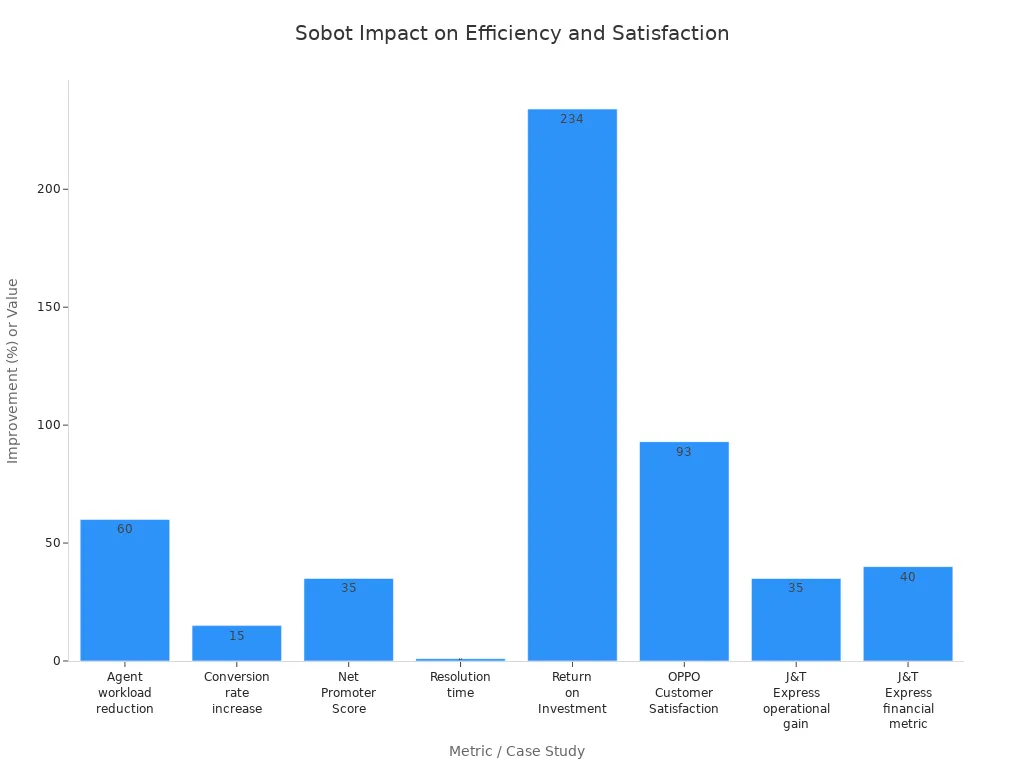
Ecommerce & Retail Use Cases
Retail and ecommerce businesses face high expectations for fast, personalized service. Sobot’s scenario-based AI supports the entire customer journey, from pre-sales questions to post-sales support. Companies using Sobot Live Chat report a 15% increase in conversion rates and a 35% boost in Net Promoter Score. The platform’s automation features help teams resolve issues in under one minute, improving both customer satisfaction and service quality. Sobot’s secure AI ensures compliance with data privacy standards, which builds trust and loyalty. By unifying customer interactions across channels, Sobot enables businesses to deliver high-quality support and achieve measurable improvements in satisfaction and retention.
Sustaining CX KPI Success
Goal Setting
Setting measurable goals forms the foundation of successful customer experience management. Companies should define clear objectives that align with their overall customer experience strategy. Using the SMART criteria—Specific, Measurable, Achievable, Relevant, and Time-bound—helps teams set realistic targets. For example, a business might aim to increase its customer satisfaction score by 10% within six months. Teams should identify the most relevant KPIs, such as NPS or CSAT, and establish baselines to track progress. Regular assessment and coordination across departments ensure that goals remain aligned with business priorities. Sobot’s analytics dashboards make it easy to set, monitor, and adjust these targets, supporting continuous improvement.
Tip: Assigning specific roles and deadlines keeps everyone accountable and ensures timely progress toward customer experience goals.
Continuous Monitoring
Continuous monitoring of customer experience KPIs allows organizations to track every customer interaction across channels. This approach ensures consistent service quality and quick identification of trends. Companies with strong omnichannel strategies retain 89% of their customers, compared to only 33% for those with weak strategies (source). Regular monitoring helps businesses adapt to changing needs and maintain high satisfaction levels. Sobot’s real-time analytics and sentiment detection tools provide supervisors with live insights, enabling immediate coaching and support for agents. By refining KPIs and making incremental improvements, organizations foster resilience and long-term growth.
- Track KPIs like first-call resolution and average handling time.
- Use AI-driven analytics to flag negative sentiment and recurring issues.
- Adjust strategies based on real-time data for better customer experience.
Reporting Results
Transparent reporting transforms customer experience data into actionable insights for stakeholders. Effective reports tailor information to the audience, focusing on the metrics that matter most. For example, board members may want to see long-term business impact, while managers focus on operational efficiency. Combining quantitative KPIs, such as CSAT and NPS, with qualitative feedback creates a complete picture. Sobot’s reporting features allow teams to visualize trends, compare performance against benchmarks, and highlight areas for improvement. Sharing customer stories and contextual information helps explain results and drive decision-making. Regular, clear communication ensures that everyone understands the impact of customer experience initiatives and supports continuous improvement.
| Reporting Best Practice | Benefit |
|---|---|
| Tailor reports to stakeholders | Increases engagement and relevance |
| Combine quantitative and qualitative data | Provides a holistic view of experience |
| Use visualizations and trends | Makes data easy to understand and act upon |
| Highlight actionable insights | Drives strategic decisions and improvements |
Optimizing customer experience KPIs drives long-term business growth. Leading companies show that aligning customer, profit, and risk metrics with AI ensures sustainable results. Consistent delivery of great experiences builds loyalty, advocacy, and higher profitability. Sobot Live Chat connects customers to agents and chatbots, merges channels, and provides real-time updates and analytics. Teams use these tools to improve service and track performance. Companies should start using these strategies and monitor their impact. Explore Sobot’s solutions to create seamless experiences and lasting customer relationships.
FAQ
What are CX KPIs and why do they matter?
CX KPIs, or customer experience key performance indicators, measure how well a business meets customer needs. Companies that track CX KPIs see higher satisfaction and loyalty. Sobot’s analytics help teams monitor over 150 CX KPIs for actionable insights.
How does Sobot Live Chat improve CX KPIs?
Sobot Live Chat boosts CX KPIs by unifying customer conversations across channels. The platform uses AI to automate responses and provides real-time analytics. Businesses report a 38% increase in conversion rates and faster resolution times with Sobot Live Chat.
Which CX KPIs should retail and ecommerce businesses track?
Retail and ecommerce teams should focus on CX KPIs like Net Promoter Score (NPS), Customer Satisfaction (CSAT), retention rate, and conversion rate. Sobot’s omnichannel solution helps track these CX KPIs and improves customer engagement across all touchpoints.
How can automation help optimize CX KPIs?
Automation handles routine tasks, freeing agents to focus on complex issues. Sobot’s AI-powered tools improve first contact resolution and reduce average handling time. Companies using automation see up to 25% higher CX KPIs and lower operational costs (source).
How often should businesses review their CX KPIs?
Teams should review CX KPIs regularly, at least monthly. Continuous monitoring helps spot trends and address issues quickly. Sobot’s real-time dashboards make it easy to track CX KPIs and adjust strategies for better customer experience outcomes.
Tip: Consistent review of CX KPIs leads to long-term business growth and higher customer loyalty.
See Also
Effective Strategies To Improve Customer Satisfaction In Live Chat
Proven Methods For Managing Quality In Call Centers
Ways To Enhance Call Center Results Through Monitoring